The Lotus Miroku corner features seated images of bosatsu
(Skt. bodhisattva) with one leg pendant. This imagery of a deity
sitting contemplatively in half-lotus position, which came to be
worshipped first as Śākyamuni Buddha and later as Avalokiteśvara (J.
Kannon) and Maitreya (J. Miroku), was introduced to Japan and became
the representative image of Miroku. In the Nara period, this form
attracted devotion as Kannon. In the Heian period, bodhisattva
statues with this posture came to be associated with the Prince
Shōtoku cult and were revered in the form of Nyoirin Kannon. After
the Heian period, we see an emergence of Miroku statues with a lotus
and two sets of arms, which were considered to symbolize Kannon.
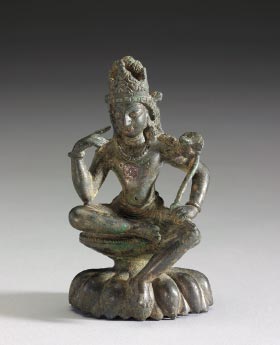

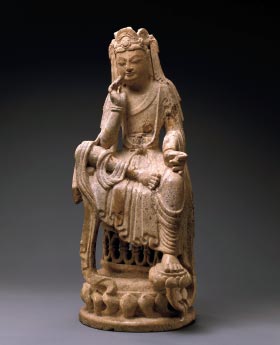

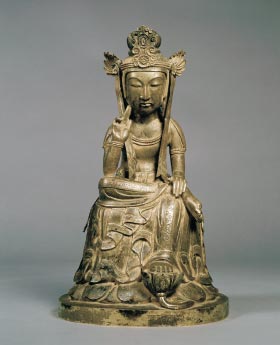
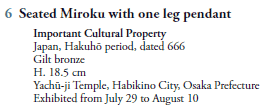
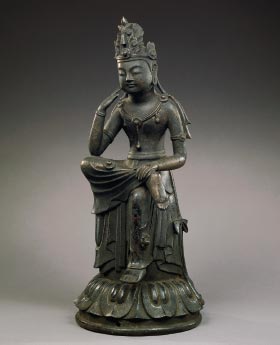
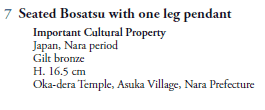
An inscription carved into the lotus
pedestal here indicates that this statue was cast in 666 as Miroku.
This image, thought to have
attracted devotion as Kannon, was purportedly enshrined inside
Oka-dera’s main image of worship, a Nyoirin Kannon statue, which was
made in the Nara period.